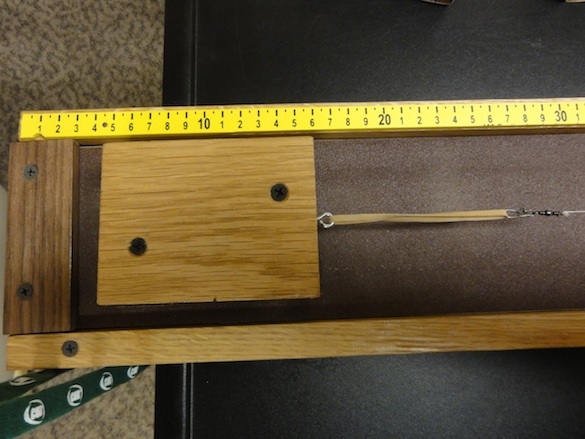WOOSTER, OH – Thanks to our crafty technician, the Wooster Geology Department is now the proud owner of an earthquake machine. The design comes from IRIS as a way to demonstrate Elastic Rebound Theory, the idea that stress accumulates on a fault until it slips, releasing the stress and causing an earthquake.
The machine is relatively simple. It consists of a wooden block covered in sandpaper sitting on a sandpaper-covered track. The wooden block is attached to a rubber band, which is joined to a string on the other side. The crank at the end winds the string around the threaded rod, pulling the wooden block along the track.
In the experiment, a person turns the crank at a constant rate. The string pulls on the block, but the block doesn’t move. Initially, the rubber band stretches to accommodate the stress. Eventually, the stress overcomes the frictional force holding the wooden block in place. The wooden block jumps forward along the track and the rubber band returns to its original length. The stick-slip motion of the wooden block simulates the stick-slip motion of faults.
After some practice and coordinated teamwork, we generated about 35 slip events. We recorded the position of the block after each event and the amount of time between events. It took about 20 minutes of class time, 8 volunteers, and 3 trial runs.
Although the model is relatively simple, the data are not. We’re using the data to ask sophisticated questions about earthquakes: What is the relationship between earthquake size and the amount of time between events? How predictable are earthquakes? What size earthquakes are most common? How do our results compare to the public perception of earthquakes? Eventually, we’ll compare our model to real earthquake data and case studies.






Cool!
Pingback: What’s up? The Friday links (45) | paleoseismicity.org
12 years of archived USGS seminars available from here in Menlo Park!